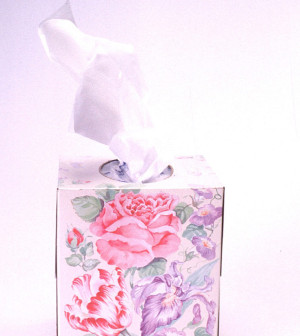- Navigating Your Midlife Crisis: Embracing New Possibilities
- City Raccoons Showing Signs of Domestication
- Mapping the Exposome: Science Broadens Focus to Environmental Disease Triggers
- One Week Less on Social Media Linked to Better Mental Health
- Your Brain Changes in Stages as You Age, Study Finds
- Some Suicide Victims Show No Typical Warning Signs, Study Finds
- ByHeart Formula Faces Lawsuits After Babies Sickened With Botulism
- Switch to Vegan Diet Could Cut Your Greenhouse Gas Emissions in Half
- Regular Bedtime Does Wonders for Blood Pressure
- Dining Alone Could Mean Worse Nutrition for Seniors
Poverty Linked to Asthma, Allergy Treatment Failure

People with asthma or food allergies who are poor have worse treatment outcomes, two new studies suggest.
“We found that patients who have asthma and come from lower income households — making less than $50,000 every year — are one and a half times more likely to see treatment fail. They are also almost twice as likely to have an asthma exacerbation,” study co-author Dr. Juan Carlos Cardet said in a news release from the American Academy of Allergy, Asthma & Immunology (AAAAI).
Cardet, who is from Brigham and Women’s Hospital in Boston, and his research team surveyed nearly 400 people with asthma. They found that lower income was strongly linked with poor treatment outcomes, regardless of race, stress and education levels.
“Income is an independent risk factor for worse asthma outcomes,” Cardet said.
But the study did not show a cause-and-effect relationship between income and asthma and allergy treatment failure.
A second study, led by Dr. Ruchi Gupta from Northwestern Medicine and Lurie Children’s Hospital in Chicago, looked at families with food allergies. Families of children with food allergies in the poorest households spent two and a half times more on costs related to ER visits and hospitalizations, the study showed.
The researchers found families with lower incomes spend less money on specialists. But, these families end up paying a lot more in out-of-pocket medication expenses.
“The first line of treatment for anaphylaxis [a life-threatneing allergic reaction] is epinephrine, but costs can be a barrier for many families,” Gupta said. “Some patients may keep expired autoinjectors or cannot afford to fill their prescription in the first place.”
Gupta said mandates are needed to ensure life-saving medications for anaphylaxis are more accessible and available, particularly in public places.
The findings are to be presented Monday at the AAAAI annual meeting in Los Angeles. Research presented at the meeting will be published in an online supplement to The Journal of Allergy and Clinical Immunology.
More information
The U.S. National Heart, Lung and Blood Institute provides more information on reducing asthma disparities.
Source: HealthDay
Copyright © 2025 HealthDay. All rights reserved.










